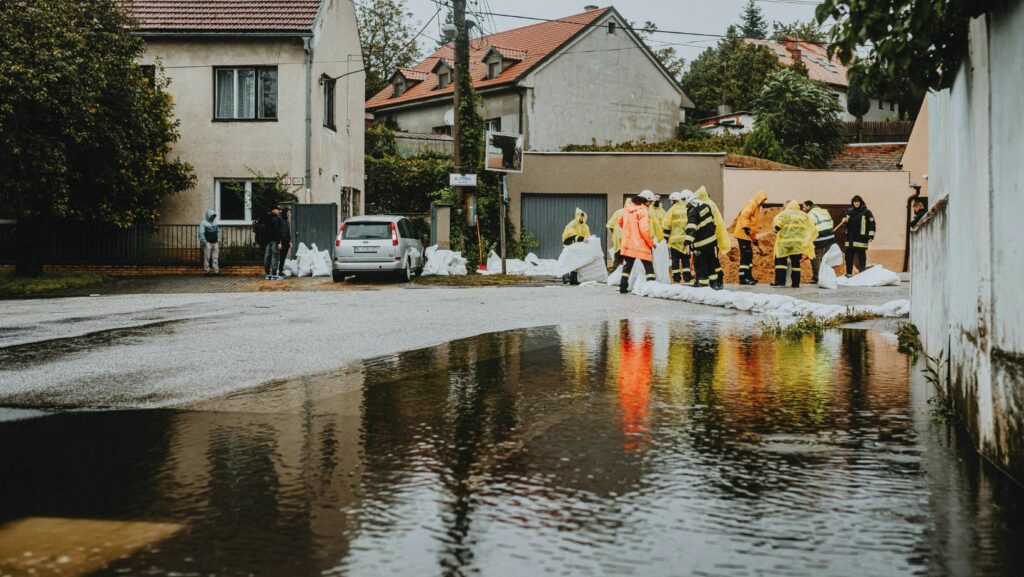Floods can strike quickly, leaving your home vulnerable to serious damage. In Ottawa, seasonal storms, overflowing rivers, and heavy rainfall can cause significant water intrusion, putting your property and belongings at risk. Understanding how to handle flood damage and water damage in Ottawa properly is crucial to protecting your home, preventing mold growth, and reducing long-term repair costs. Acting quickly and following the right steps can save you thousands of dollars and help restore your home efficiently.
Assessing the Flood Damage Safely
Before stepping into a flooded area, safety should be your top priority. Flooded homes can hide structural hazards, electrical risks, or gas leaks. Always turn off electricity and gas if it is safe to do so. Carefully inspect the property to assess the extent of the water damage in Ottawa. Documenting everything through photos or videos is essential for insurance claims. By conducting a careful assessment, you set the stage for an organized and safe cleanup process, minimizing further damage to your home.
Contact Your Insurance and Emergency Services
Once the initial assessment is complete, contact your insurance company immediately. Insurance providers often require prompt notification for water damage in Ottawa to process claims efficiently. Understand your policy coverage, including temporary relocation, emergency repairs, and long-term restoration. It’s also helpful to have a list of local emergency contacts, such as the Ottawa Fire Department and licensed water damage restoration professionals, ready in advance. Acting fast can significantly reduce financial losses and stress after a flood.
Protect Your Belongings from Further Damage
Moving valuable items and furniture to dry, elevated areas can prevent additional water damage in Ottawa. Using waterproof containers or plastic sheeting helps protect personal belongings and important documents. If your home has extensive flooding, consider temporary storage options for items that are prone to water damage. Quick action in safeguarding your possessions reduces the risk of permanent loss and supports an easier restoration process.
Water Removal and Drying Process
Water extraction is the most critical step in dealing with flood damage. Removing standing water with pumps or wet vacuums prevents further structural deterioration and mold growth. For large-scale water damage in Ottawa, professional restoration companies have specialized equipment to ensure thorough drying.
 It is important to dry walls, floors, and furniture completely, as lingering moisture can lead to structural weakening and health hazards. Proper ventilation and dehumidifiers also help accelerate the drying process.
It is important to dry walls, floors, and furniture completely, as lingering moisture can lead to structural weakening and health hazards. Proper ventilation and dehumidifiers also help accelerate the drying process.
Cleaning and Sanitizing Affected Areas
Flooded areas are often contaminated with bacteria, sewage, and debris, making cleaning and sanitizing essential. Remove debris and disinfect surfaces thoroughly. Special attention should be given to carpets, upholstery, and electronics, as they are highly susceptible to water damage in Ottawa. If an item is beyond repair, discarding it is safer than risking mold or contamination. Effective cleaning not only restores your home but also ensures a healthy environment for your family.
Mold Prevention and Remediation
Mold can develop within 24–48 hours after water exposure, making prevention crucial. Signs of mold include musty odors, visible spots, or discolored surfaces. For extensive mold growth, it’s recommended to hire professional remediation services. Preventing mold after water damage in Ottawa involves complete drying, proper ventilation, and using antimicrobial treatments on affected surfaces. Prompt action protects your health and maintains the integrity of your home.
Restoring Your Home
After water removal and cleaning, the restoration phase begins. This may include repairing structural damage, replacing flooring, repainting, or restoring electrical systems. Hiring licensed contractors in Ottawa ensures that the work meets safety standards and building codes. Proper restoration helps return your home to its pre-flood condition while minimizing the risk of future issues.
Preparing for the Future
Preventing future water damage in Ottawa requires planning and maintenance. Installing sump pumps, backwater valves, or improved drainage systems can reduce flood risks. Landscaping adjustments to divert water away from your home also help. Regular inspections and emergency preparedness, such as keeping sandbags or waterproof barriers on hand, provide added protection. Being proactive ensures your home is better equipped to handle future storms.
Swift Action Saves Homes and Wallets
Flood damage can be overwhelming, but knowing how to respond effectively can make all the difference. Quick assessment, professional water removal, thorough cleaning, and proper restoration are key steps to handling water damage in Ottawa. Acting fast not only preserves your home but also protects your family’s health and reduces long-term costs. If your Ottawa home has been affected by flooding, contacting experienced restoration professionals ensures the job is done safely and efficiently, giving you peace of mind after a disaster.

